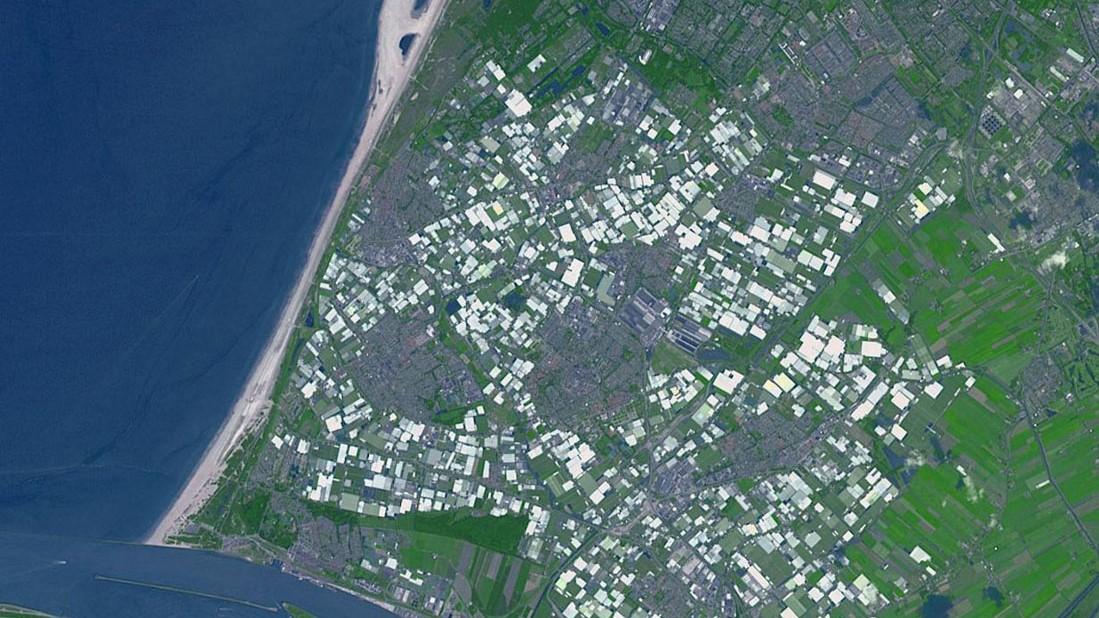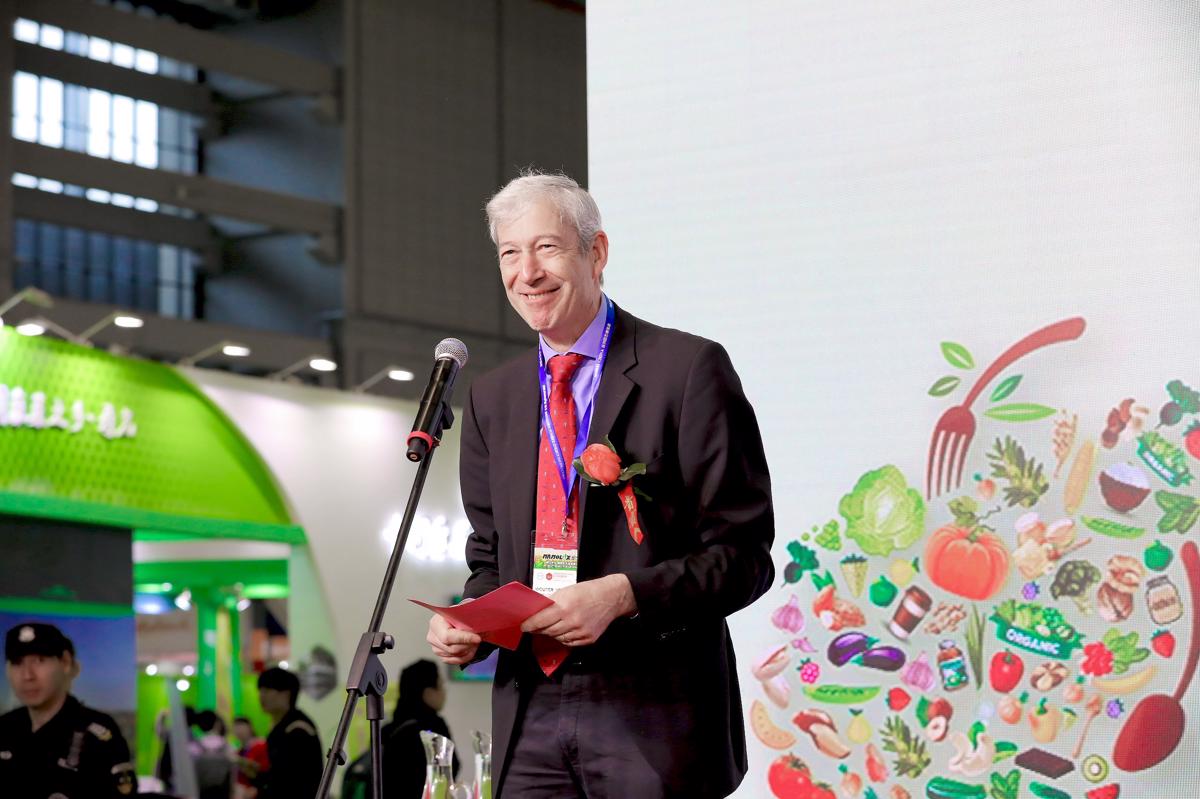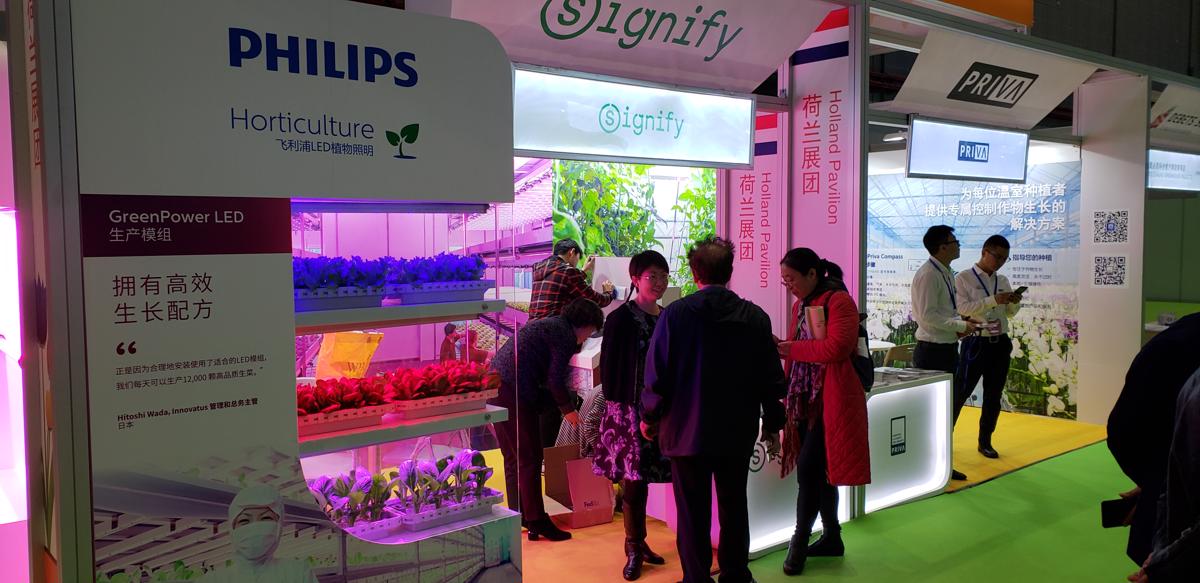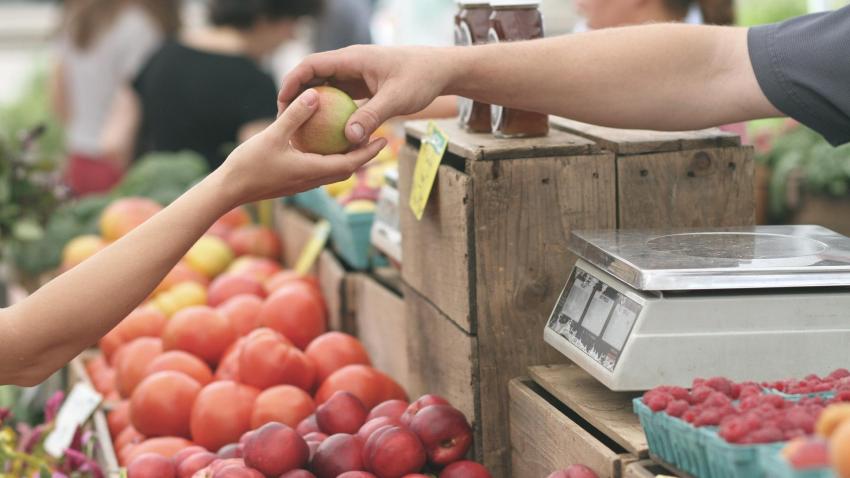You are here
Back to topHorti China 2018: How Holland Leads the Way in Global Greenhouse Horticulture

Greenhouses take up much of the available land area in Westland in the Netherlands. Image: NASA
The Netherlands is a giant in global greenhouse horticulture. To start with, the country itself produces an enormous amount of high-value agricultural products: “the Netherlands is the second largest net exporter [by value] of agro-food products in the world,” says Wouter Verhey, Agriculture Counsellor at the Dutch embassy in Beijing.
Much of that value comes from greenhouse fruits and vegetables, which yield high revenue off a small amount of land—important in a country only less than twice size of the US state of New Jersey, and about half the size of the Chinese province of Jiangsu.
The Netherlands is also a world leader in cut flowers and plant propagation materials like seeds and bulbs used by the global horticulture and floriculture industry. Furthermore, examine any large, cutting-edge greenhouse project around the world, and there’s likely at least one Dutch supplier involved, if not many. These companies supply goods like irrigation controllers and drive systems, as well as services like design, project management and software solutions.

It was for the sake of these greenhouse suppliers that Verhey was at Horti China 2018, where Produce Report spoke with him, and where 20 Dutch greenhouse technology and services companies were exhibiting. “Our total exports to China in agriculture and food are about $3.5 billion,” says Verhey. “But our focus here is more on the export of knowledge and technology.”
We were curious to hear his thoughts about why the Netherlands has been able to gain and keep such a dominant position in the business of building and managing greenhouses. One reason was apparent simply from observing the Holland booth: the country puts a lot of government effort into supporting Dutch companies’ activities around the world. In addition to Verhey, there were also Dutch and Chinese representatives with agriculture-focused roles present from the Dutch consulate in Shanghai.

On top of that was a representative from the Netherlands Business Support Office (NBSO) in Nanjing. Unlike the embassy and consular staff, NBSO is not focused on diplomacy. Its core mission is to assist Dutch companies at an economic level. NBSO has six offices around China, the locations of which are chosen because they offer promising opportunities for Dutch companies in various industries.
One of the exhibitors at Horti China, Fulco Wijdooge of Ridder Group, immediately offered an example when asked if he clearly felt a benefit for his company from the tight cooperation between government and industry. “We were part of a consortium of companies, which were mostly complementary to each other, but also some competitors. And this was a program by the government. They organized and helped us to organize a series of programs and activities in China [to introduce those companies to potential customers].” He says that the series of events was highly successful. “The support of the government is always appreciated….they help open a lot of doors to potential Chinese customers, as well as Chinese government bodies.”
Inside of Holland, this collaboration expands to what Verhey calls a ‘Triple Helix’ model, involving industry, government and research bodies. Although cooperation between these three bodies is not a novel concept, Verhey thinks Holland does it more effectively.
In Holland, “the government is responsible for creating the enabling environment, and research and industry work together closely on solutions,” says Verhey. “If you look at how we funded universities in the past, or how it’s done in many other countries, they just get funds from the government and do what they want to do. But the research is quite often not connected to what society is asking for. So we changed the way we fund the universities. Now they have to at least partly channel the funding via industry to ensure that the universities do what society is asking for.”
As for the factors that set the industry itself apart in the international arena, “one common vein I think you see in Dutch companies is that they’re not focused on individual technologies,” says Verhey. “They’re focused on solutions. They start from identifying a problem and then go backward to figure out what technologies should be applied to solve the problem. They don’t sell technology; they sell solutions.” It is also common to see many Dutch companies working together on a single project to bring several different solutions into one integrated greenhouse project.
Of course, there are competitors to these Dutch companies in Israel, Australia, and China, among others. So they face constant pressure to innovate and improve. One area that is likely to see a lot of focus for new innovations in coming years is sustainability and “circular agriculture,” which strives to create input- and climate-neutral crops through technologies like geothermal heating/cooling and recycling of captured carbon dioxide from other industries.
“Our Agriculture Minister, Ms. Carola Schouten, made a policy paper towards circular agriculture,” says Verhey. “The Dutch government has set a target that by 2030, 50% of agricultural waste materials will be recycled, and by 2050, 100% of the materials will be reused.”













Add new comment